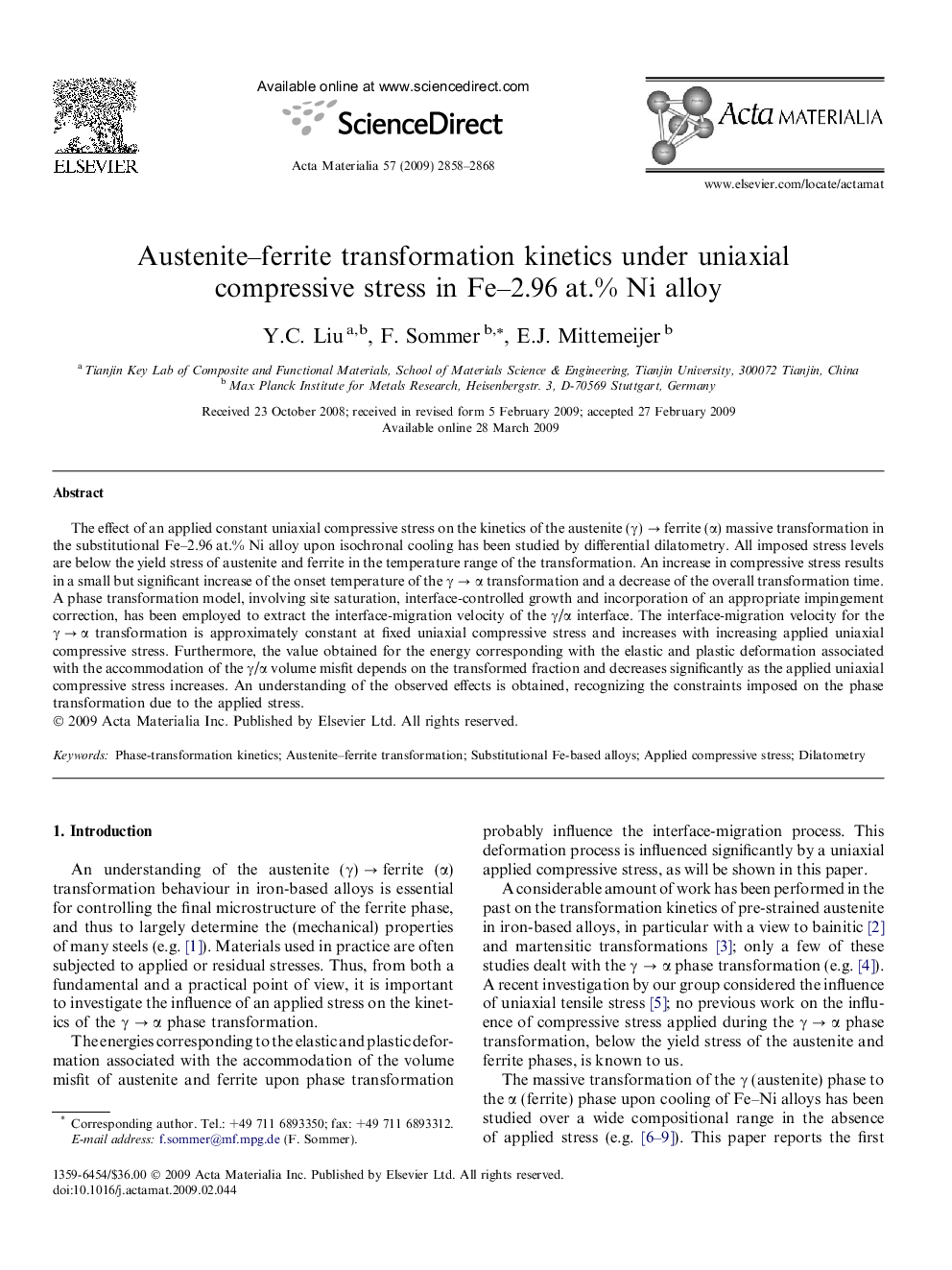| Article ID | Journal | Published Year | Pages | File Type |
|---|---|---|---|---|
| 1449405 | Acta Materialia | 2009 | 11 Pages |
The effect of an applied constant uniaxial compressive stress on the kinetics of the austenite (γ) → ferrite (α) massive transformation in the substitutional Fe–2.96 at.% Ni alloy upon isochronal cooling has been studied by differential dilatometry. All imposed stress levels are below the yield stress of austenite and ferrite in the temperature range of the transformation. An increase in compressive stress results in a small but significant increase of the onset temperature of the γ → α transformation and a decrease of the overall transformation time. A phase transformation model, involving site saturation, interface-controlled growth and incorporation of an appropriate impingement correction, has been employed to extract the interface-migration velocity of the γ/α interface. The interface-migration velocity for the γ → α transformation is approximately constant at fixed uniaxial compressive stress and increases with increasing applied uniaxial compressive stress. Furthermore, the value obtained for the energy corresponding with the elastic and plastic deformation associated with the accommodation of the γ/α volume misfit depends on the transformed fraction and decreases significantly as the applied uniaxial compressive stress increases. An understanding of the observed effects is obtained, recognizing the constraints imposed on the phase transformation due to the applied stress.
